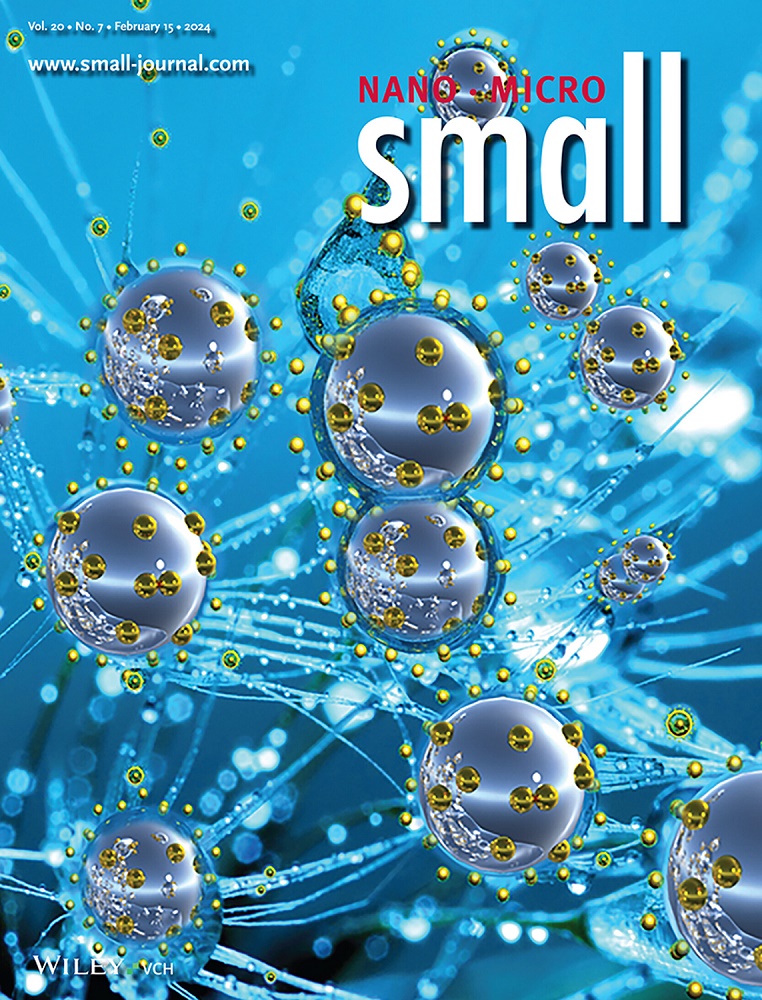Hydrogel Microspheres Empowering Organ-on-a-Chip Systems: Innovations and Applications.
IF 13
2区 材料科学
Q1 CHEMISTRY, MULTIDISCIPLINARY
引用次数: 0
Abstract
Organ-on-a-chip (OoC) is an in vitro platform that uses microfluidic technology to simulate the microphysiological environment of human organs. It can reconstruct tissue architecture, mechanical microenvironments, and biochemical signaling. Since its inception, OoC technology has evolved from 2D static cultures to 3D dynamic biomimetic models. It is widely used in physiological and disease modeling, drug development and screening, and personalized medicine. In recent years, with the rapid progress in materials science and manufacturing technologies, hydrogel microspheres (HMs) with excellent biocompatibility and tunable properties have become a focus in biomedical research. HMs can mimic the properties of the extracellular matrix (ECM) and address the problem of lacking biochemical and biophysical signals in traditional OoC systems. This has greatly promoted the development of OoC technology and given it new abilities, such as accurately simulating cellular niche microenvironments, building complex system models and 3D tissue networks, encapsulating and delivering target cells or therapeutic agents, and studying intercellular and inter-organ crosstalk. This review introduces the concept, characteristics, and fabrication strategies of OoC systems, discusses the materials and methods for HM fabrication and integration, explores recent applications of HMs in OoC platforms, and offers insights into the development of "smart" HMs for advanced OoC systems.水凝胶微球增强器官芯片系统:创新和应用。
器官芯片(Organ-on-a-chip, OoC)是一种利用微流体技术模拟人体器官微生理环境的体外平台。它可以重建组织结构、机械微环境和生化信号。自成立以来,OoC技术已经从2D静态培养发展到3D动态仿生模型。它广泛应用于生理和疾病建模、药物开发和筛选以及个性化医疗。近年来,随着材料科学和制造技术的飞速发展,具有优异生物相容性和可调性能的水凝胶微球成为生物医学研究的热点。HMs可以模拟细胞外基质(ECM)的特性,解决传统OoC系统缺乏生化和生物物理信号的问题。这极大地促进了OoC技术的发展,并赋予其新的能力,如精确模拟细胞生态位微环境,建立复杂的系统模型和三维组织网络,封装和递送靶细胞或治疗剂,以及研究细胞间和器官间的串扰。本文介绍了OoC系统的概念、特点和制造策略,讨论了用于OoC系统制造和集成的材料和方法,探讨了OoC系统中“智能”HMs的最新应用,并为先进OoC系统的“智能”HMs的发展提供了见解。
本文章由计算机程序翻译,如有差异,请以英文原文为准。
求助全文
约1分钟内获得全文
求助全文
来源期刊

Small
工程技术-材料科学:综合
CiteScore
17.70
自引率
3.80%
发文量
1830
审稿时长
2.1 months
期刊介绍:
Small serves as an exceptional platform for both experimental and theoretical studies in fundamental and applied interdisciplinary research at the nano- and microscale. The journal offers a compelling mix of peer-reviewed Research Articles, Reviews, Perspectives, and Comments.
With a remarkable 2022 Journal Impact Factor of 13.3 (Journal Citation Reports from Clarivate Analytics, 2023), Small remains among the top multidisciplinary journals, covering a wide range of topics at the interface of materials science, chemistry, physics, engineering, medicine, and biology.
Small's readership includes biochemists, biologists, biomedical scientists, chemists, engineers, information technologists, materials scientists, physicists, and theoreticians alike.
 求助内容:
求助内容: 应助结果提醒方式:
应助结果提醒方式:


